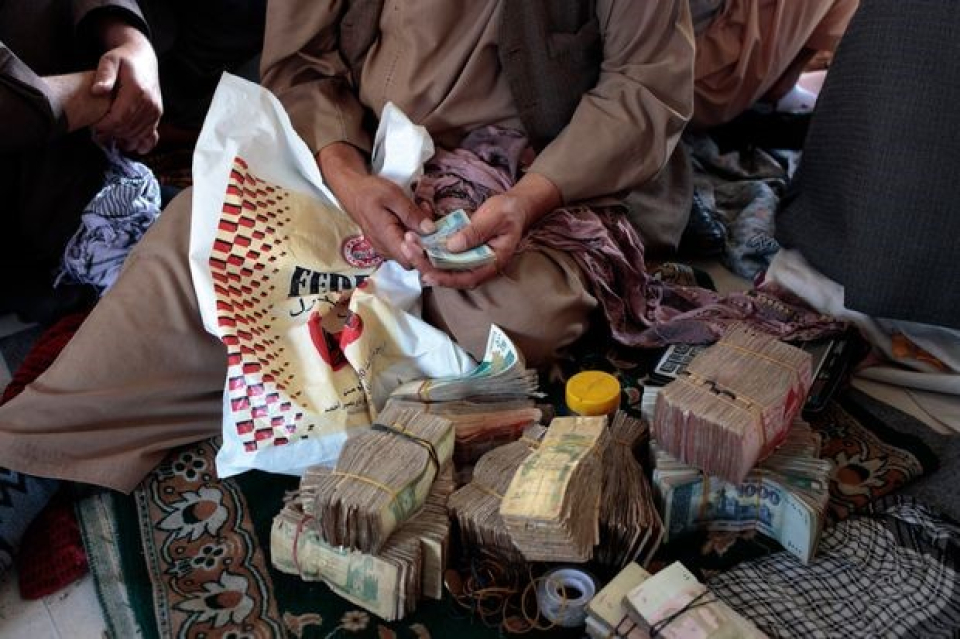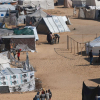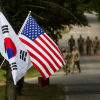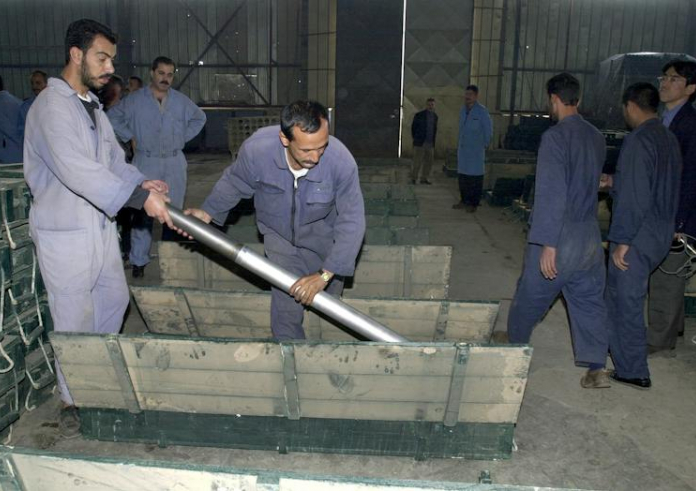By : Sune Engel Rasmussen and Josh Mitchell
The U.S. spent $145 billion over two decades in Afghanistan to turn one of the poorest nations on earth into a self-sustaining economy—the boldest effort this century at Western nation-building. That project has largely failed.
Afghanistan’s economy did grow, and millions of Afghans gained access to education, healthcare and jobs. But the economy that the U.S. helped build relies overwhelmingly on foreign aid, most of which evaporated overnight. Afghanistan’s economy—and the welfare of its people—is on the verge of collapse following the U.S. exit last month and the Taliban takeover, international experts say.
“When aid was there, we were able to pay salaries, buy electricity and we were able to fund our national army,” said Salma Alokozai, who served in the fallen Afghan government’s finance and education ministries, and liaised with the World Bank and International Monetary Fund. “The private sector was doing fine. Right now, there is no private sector, and there is no aid money.”
One U.S. Defense Department official put it more bluntly, telling the U.S. Special Inspector General for Afghanistan Reconstruction (Sigar) in a report last month: “When you look at how much we spent and what we got for it, it’s mind-boggling.”
P. Michael McKinley, the U.S. ambassador to Afghanistan from 2014 to 2016, acknowledged, “On balance, nation-building in Afghanistan was not a success.”
The U.S. alone spent $145 billion over 20 years to rebuild Afghanistan, according to Sigar, a watchdog agency created by Congress. That is on top of $837 billion in U.S. military spending on the country. That exceeds the roughly $137 billion, in today’s dollars, that the U.S. spent on the Marshall Plan to rebuild Europe after World War II, according to Sigar, and the roughly $70 billion spent to rebuild Iraq.
Critics say foreign aid built infrastructure—roads, schools, health facilities—but not a self-sustaining private sector. The money “often went into projects that were not sustainable with existing Afghan revenues or other ways they could support it going forward without the U.S.,” said Catherine Lutz, co-founder of Costs of War, a project at Brown University that studies U.S. spending in foreign countries.
Much of the aid flowed through U.S. contractors to meet U.S. priorities, such as counterinsurgency and battling suspected terrorists, rather than to Afghans and Afghan-owned businesses. Afghan officials have for years complained they didn’t have enough influence over what aid money was spent on. The torrent of money also fed corruption that undermined the legitimacy of the Washington-backed government. Public distrust of leaders in Kabul eased the Taliban’s return to power.
“Corruption was the biggest reason the government fell,” said Ms. Alokozai.
The failure to strengthen the Afghan state was most stark in agriculture. Despite $2 billion in U.S. spending, farming output has barely increased over the past two decades. Its share of gross domestic product has fallen to 20% from 70% in 1994, even though two in three Afghans still live in rural areas.
In 2010, the U.S. Department for Agriculture paid the American Soybean Association to introduce soybeans to Afghan farmers. Yet a U.K. government study two years earlier concluded the growth and harvest cycle of the crop and its water needs didn’t suit the Afghan farming system. The ASA didn’t study the feasibility of the project before it was implemented, according to a 2014 letter by Sigar.
An Afghan farmer who took part in the soybean project in Balkh province said there wasn’t enough water to grow the crop, the proper seeds weren’t available locally, and there was no market for any harvested crops. “It was a big failure,” the farmer said. Sigar agreed.
ASA spokeswoman Wendy Brannen disputed that. She said the project had achieved “successes in line with or exceeding its original objectives.” She added, “Our acceptability and sensory analyses showed that Afghans eat and like soy and that it could be a viable source of protein in a very protein deficient country.”
The U.S. sought to introduce alternative crops to opium poppies. But Afghan farmers were reluctant to give up poppies, one of their few cash crops. Others, such as saffron, pine nuts and cotton were far less lucrative, and rutted roads and poor storage infrastructure made exports difficult.
The U.S. Agency for International Development spent $335 million building the Tarakhil diesel power plant to supply Kabul with electricity. But diesel is expensive and dangerous to transport in Afghanistan. By the time the plant opened in 2010, a year behind schedule and tens of millions of dollars above budget, a separate project funded by the Asian Development Bank connected Kabul to far cheaper hydropower from Uzbekistan. By 2015, Tarakhil produced only 1% of its capacity, and 0.35% of Kabul’s power.
The nation-building efforts did improve the lives of Afghans in important ways. The infant mortality rate has dropped by nearly half, according to the World Bank. Life expectancy rose from 57.2 years in 2003 to 64.8 years in 2019. Before the Taliban takeover, which threatens girls’ access to education, more children were going to school and could read; many more Afghans had gained access to healthcare and education.
Rapid urbanization has changed the face of bigger cities such as Kabul, Mazar-e-Sharif and Herat. Kabul has coffee shops inspired by minimalist Scandinavian design, restaurants open late into the night, and a handful of private internet service providers.
Some data is superficially impressive: Gross domestic product more than quadrupled from 2003 to $19.8 billion in 2020. But much of that was the spinoff effect of the Western military presence. Poverty generally fell much more in conflict areas because Western soldiers brought logistics and development, in part to win local hearts and minds.
All of the GDP increase came by 2012 at the end of the surge of U.S. troops; GDP has since stagnated. Unemployment has risen in recent years to 23.9% in 2017. Huge disparities persist between women and men, and between urban and rural residents. The women’s unemployment rate, at 40%, is more than double that of men. Only one in five women are literate, compared with half of all men. Before the Taliban took power, only one in four girls attended high school, compared with nearly half of all boys, a gap that could grow if the Taliban ban girls’ secondary education, as many fear.
The World Bank estimated 55% of the population to live below the poverty line in 2019, up from 34% since 2008.
Mr. McKinley, the former ambassador, said the country never developed a plan to provide long-term security without foreign forces. “The gains you can measure like extending education or health services are the ones that are most vulnerable” to deteriorating security, he said.
Afghanistan is dependent on imports, including for three-fourths of its power. Its trade deficit last year was equal to about a quarter of GDP, much of it financed by foreign aid.
Aid has been curtailed and the Taliban no longer has access to the country’s foreign currency reserves to pay for imports. Loss of that access “will lead to a collapse of the economy and the banking sector,” said Shah Mehrabi, a senior member of Afghanistan’s central bank.
The Biden administration said Friday it would allow U.S. agencies, aid groups and the private sector to send food and medicine to Afghanistan, providing a limited waiver from terrorist sanctions on the Taliban that have restricted trade and finance to the country, in an effort to alleviate an impending humanitarian crisis.
More than a third of government revenues came from taxes on imports; that revenue has collapsed, draining the government of money to pay the salaries of public employees. More than half of them are teachers; if hundreds of thousands don’t get paid, it could be calamitous for children.
Afghanistan’s economy could contract by 4% to 13% this year, and the poverty rate could rise to 97% of the population, according to a report this month by the United Nations Development Programme.
The U.S. spent $145 billion over two decades in Afghanistan to turn one of the poorest nations on earth into a self-sustaining economy—the boldest effort this century at Western nation-building. That project has largely failed.

















